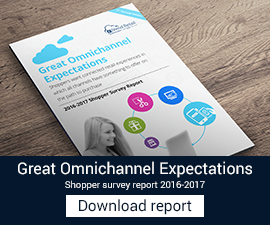Business intelligence and analytics have long been pivotal tools for large corporations and financial firms, but these strategies are equally effective for small and  medium-sized businesses. In the modern marketplace, business intelligence and analytics can give your retail enterprise a crucial edge up on your competitors.
medium-sized businesses. In the modern marketplace, business intelligence and analytics can give your retail enterprise a crucial edge up on your competitors.
iVend Analytics offers an intuitive, user-friendly interface that allows business owners to track customer trends and turn data into meaningful, actionable intelligence. With this software, you will be able to accelerate purchasing, more accurately manage pricing and promotion, and ultimately increase sales volume. Business intelligence tools provide an accurate, easy-to-read view of the costs, liabilities, and risks involved with your business. They make it easy to decipher customer purchase patterns. They simplify back-end procedures such as inventory and stocking. And, they help you decide when to kick off a promotional campaign, and with what products, based on your customer patterns.
iVend Analytics provides business intelligence in a user-friendly format. Dashboards cover various sectors of your retail enterprise, and these dashboards present vital information in an instantly readable, visual format so you don’t have to go searching for trends in haphazard data fields. An associative search function allows you to quickly and easily find the insight you need to make vital business decisions. The dashboard templates are customizable for category management, meaning you can put the data that matters most at your fingertips. Thus iVend Retail software is highly flexible, and can grow with your business.
A further benefit of the iVend analytics is that it functions seamlessly with other business tools in iVend Retail. Point of sale, customer Loyalty, eCommerce and Mobile solutions from iVend Retail all work in tandem with iVend Analytics. The business intelligence end of iVend Retail, iVend Analytics works to seamlessly integrate the other tools in iVend Retail, and indeed all aspects of your retail business enterprise, so that you can make better-informed business decisions.
The iVend retail suite covers all ends of the business, from customer relations at the register, to back-of-the-store functions, to head office procedures. The software is fast, secure, is SAP and PCI certified, can integrate with almost any ERP, and is powerful enough to handle large retailers with hundreds of stores. Whether you are a single store or a retail chain with an online component, iVend Retail can help you simplify the many complexities of running a retail business. Our software can help you optimize pricing, promotion, purchasing, and all facets of retail, in order to increase your bottom line.
As an example of the type of scenario iVend can help you with, consider a promotion designed to increase sales volume during the holiday season. How do you ensure that excess stock after the holiday season rush is not sold under the same clearance as during the holiday promotion? Business intelligence from iVend can help you plan ahead to not only decide how best to reach your market with efficient, targeted sales, but also how to manage those sales through the duration.
Business intelligence software can help you simplify and streamline all aspects of your business. The improved efficiency delivered by sound business intelligence can help your enterprise save money and increase net profit. iVend Analytics and the iVend Retail Suite are the superior choice in business intelligence, because the software boasts a harmonious blend of speed, security, and power, with a user-friendly interface. In order to be competitive in the modern marketplace, business intelligence software from iVend is an obvious choice for your business.






